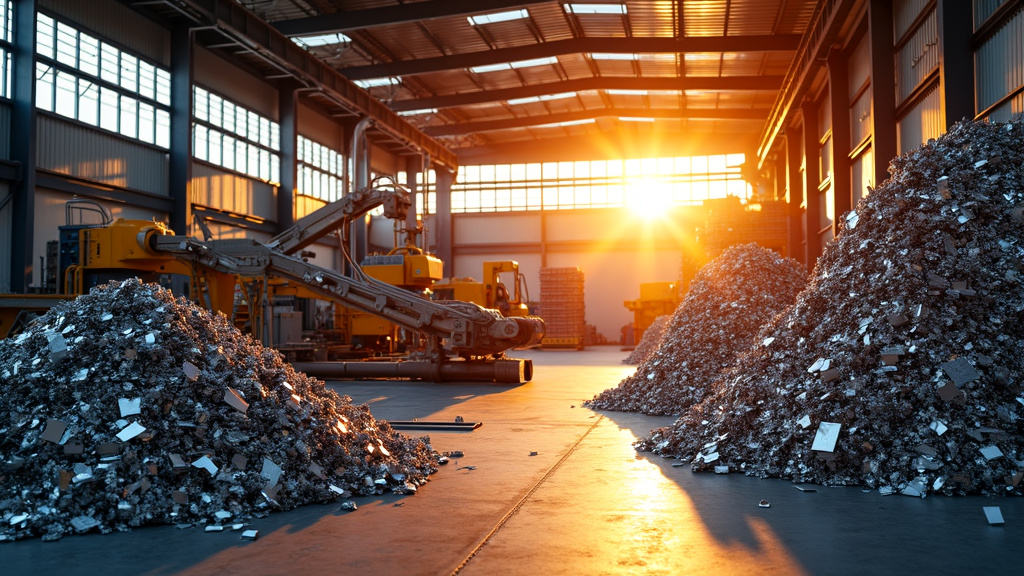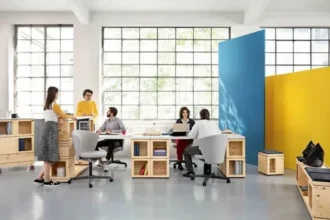In a world increasingly focused on sustainability, industries that once relied on resource-heavy processes are now being challenged to rethink how they operate. Metal fabrication, the backbone of countless sectors such as construction, automotive, aerospace, and manufacturing, is one of them. Traditionally known for its high energy consumption and material waste, this industry is now evolving to embrace efficiency, innovation, and environmental responsibility.
Reducing waste in metal fabrication not only conserves valuable raw materials but also cuts production costs and carbon emissions. Through smarter design, modern technologies, and better recycling practices, manufacturers are showing that sustainability and productivity can go hand in hand.
Why Waste Reduction Matters in Metal Fabrication
Metal fabrication involves cutting, bending, welding, machining, and assembling metal parts into functional components. Each of these processes can produce offcuts, scrap, or by-products that, if not managed properly, contribute to both financial loss and environmental damage.
Common types of waste in fabrication include:
- Material waste: leftover sheets, rods, or shavings from cutting and machining.
- Energy waste: inefficient machinery or outdated processes consuming excess power.
- Process waste: unnecessary steps or poor planning that cause rework or rejected parts.
- Packaging and transport waste: disposable materials and inefficient logistics.
Reducing these forms of waste improves both environmental and economic outcomes. For example, lowering scrap rates means fewer raw materials need to be mined or imported — saving energy, resources, and cost. It also helps companies meet stricter environmental regulations and attract eco-conscious clients.
1.Smarter Design and Material Planning
Sustainability starts long before the metal is cut — it begins at the design stage. Engineers and designers now use Computer-Aided Design (CAD) and Computer-Aided Manufacturing (CAM) software to optimise layouts and reduce offcuts.
Nesting Techniques
“Nesting” refers to arranging parts on a sheet of metal in a way that maximises material usage. Advanced nesting software can calculate the most efficient cutting path, reducing scrap by up to 20–30%. For example, when multiple shapes need to be laser-cut from a single sheet, the software fits them together like puzzle pieces, leaving minimal unused metal.
Design for Manufacturability (DFM)
By designing components with manufacturability in mind, engineers can simplify processes, reduce material thickness where possible, and avoid unnecessary joints or welds. This approach not only lowers waste but also reduces production time and energy consumption.
2. Energy-Efficient Cutting and Forming Technologies
Modern fabrication methods have moved far beyond manual cutting and heavy tooling. Energy-efficient machinery and precision technology are now key to reducing both waste and emissions.
Laser Cutting and Waterjet Cutting
Laser and waterjet cutting systems offer precise, computer-controlled accuracy that minimises human error and rework. They can cut multiple parts from a single sheet with micron-level precision, producing less scrap compared to traditional mechanical shearing.
CNC Machining
Computer Numerical Control (CNC) machines optimise tool paths to remove only the necessary amount of material. They also reduce mistakes, which means fewer rejected parts and less reprocessing.
Press Braking and Automation
Modern press brakes use intelligent systems to calculate optimal bend sequences, reducing trial-and-error adjustments. Automation further enhances consistency, leading to less waste through human error.
3. Recycling and Reusing Metal Waste
One of the greatest advantages of metal fabrication is that metals are infinitely recyclable. Aluminium, steel, copper, and other alloys can be melted down and reused without losing strength or quality.
In-House Recycling
Many fabrication shops now collect and recycle their own scrap. Offcuts, shavings, and rejected components are sorted by material type and returned to the supply chain. Closed-loop recycling systems ensure that even the smallest fragments are reused.
Using Recycled Metals
Using recycled metal as a raw material dramatically lowers environmental impact. For example, producing steel from recycled scrap uses about 75% less energy than manufacturing it from iron ore. Recycled aluminium can save up to 95% of the energy required for new production.
Waste Segregation
Properly sorting waste streams ensures maximum recyclability. Mixing metals can make recycling difficult or impossible, so clear labelling and separation systems are essential in every workshop.
4. Adopting Lean Manufacturing Principles
Lean manufacturing is a philosophy that focuses on eliminating waste in every form — whether it’s time, movement, inventory, or materials. When applied to metal fabrication, it encourages efficiency and continuous improvement.
Just-In-Time (JIT) Production
Producing parts only when they are needed reduces overproduction and excess inventory. This approach prevents materials from sitting unused, where they might become obsolete or damaged.
Continuous Improvement (Kaizen)
Regularly reviewing production processes helps identify inefficiencies and develop better methods. Employees play a major role here small daily improvements can add up to significant waste reduction over time.
5. Sustainable Material Choices
Choosing eco-friendly materials is another crucial step toward sustainability. Many modern alloys and coatings are designed to be both durable and environmentally responsible.
- Recycled Steel and Aluminium: Using recycled metals cuts energy use and reduces landfill waste.
- Low-Carbon Alloys: Some alloys are made with reduced carbon emissions during smelting.
- Powder Coating: This finishing method produces less overspray and volatile organic compounds (VOCs) compared to traditional painting.
Additionally, selecting the right material for the intended application neither too heavy nor too thin ensures optimal performance with minimal waste.
6. Digital Monitoring and Smart Manufacturing
The rise of Industry 4.0 technologies — such as sensors, IoT devices, and data analytics — allows fabricators to monitor energy consumption, machine performance, and material flow in real time.
By tracking production data, companies can identify waste patterns, predict maintenance needs, and optimise resource usage. For instance:
- Energy sensors reveal machines that consume excess power.
- AI-based analytics help forecast demand and prevent overproduction.
- Smart inventory systems reduce unused stock and material spoilage.
Digitalisation not only improves efficiency but also provides measurable proof of sustainability for clients and regulators.
7. Sustainable Packaging and Transportation
Sustainability doesn’t end once the product leaves the workshop. Reducing waste in packaging and transport is equally important.
- Reusable or recyclable packaging materials (like corrugated cardboard or reusable pallets) can replace single-use plastics.
- Compact and modular designs allow for efficient shipping, reducing fuel use.
- Local sourcing of materials and clients helps lower transportation emissions.
Even small steps, such as combining shipments or optimising delivery routes, can significantly cut a company’s carbon footprint.
The Future of Sustainable Metal Fabrication
The future of metal fabrication lies in innovation — integrating clean technologies, renewable energy, and circular economy principles. As sustainability becomes a core business strategy rather than an afterthought, more manufacturers are re-evaluating how they produce, consume, and recycle materials.
Emerging trends such as additive manufacturing (3D printing), hydrogen-based steelmaking, and AI-driven design optimisation promise to make metal fabrication cleaner and more efficient. Governments and global organisations are also offering incentives for companies that adopt green technologies, accelerating the shift toward responsible production.
Conclusion
Sustainable metal fabrication is about more than just reducing waste — it’s about building a smarter, cleaner, and more resilient manufacturing industry. By rethinking design, adopting modern technologies, and embracing recycling, fabricators can drastically lower their environmental impact while improving quality and profitability.
Every sheet of metal saved, every kilowatt conserved, and every recycled component contributes to a larger goal — preserving our planet’s resources for future generations. Sustainability in fabrication is no longer optional; it’s the foundation of the industry’s future.

















